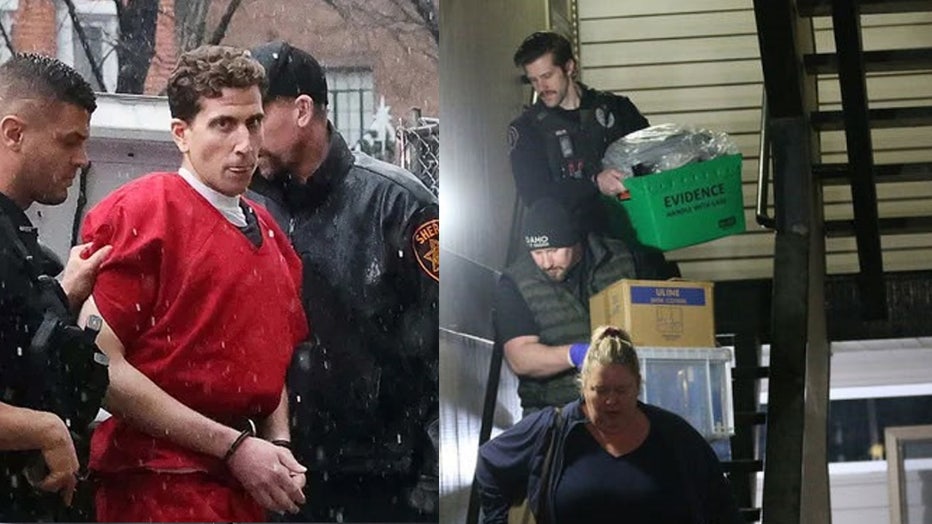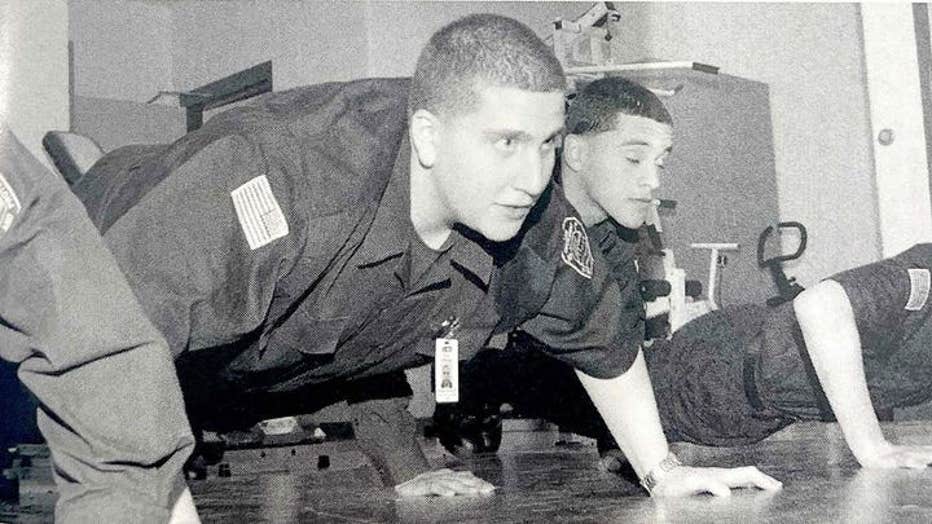Brian Kochberger case: Moscow prosecutor may sidestep grand jury indictment delay tactics
MOSCOW, Idaho – Brian Kochberger, a 28-year-old crime student accused of stabbing four University of Idaho students in November, waived his right to a speedy hearing with good cause, postponing his charge by more than six months.
But prosecutors can undermine the process by seeking a grand jury indictment, which would also save surviving roommates from having to sit opposite Kochberger in court and be cross-examined during a preliminary hearing, according to Idaho attorney Edwina Alcox, who previously represented the alleged “Cult Mom” Lori Vallow.
“Defense attorneys have no right to see this happening,” she told Fox News Digital. “They have no right to be there, no right to present any evidence or cross-examine any of the state’s witnesses.”

Besides, in Idaho there is no defense against insanity, and the death penalty is on the table.
Koberger is charged with the ambush murders of Kaylee Gonsalves, Madison Mogen, 21, Xana Kernodle, and Ethan Chapin, both 20, around 4:00 am on November 13th. He faces four charges of first-degree murder and a charge of burglary. allegedly entered the house with the intent to kill.
CONNECTED: Idaho murder suspect Brian Kochberger will challenge evidence, lawyer says
One of the two surviving roommates told police that she heard crying from Kernodle’s room and a man saying, “It’s okay, I’m going to help you.” She then saw a masked man coming out of the back door.
She will still testify before a grand jury, but she won’t have to face questioning Kochberger’s attorney Ann Taylor, as expected in a preliminary hearing rescheduled for June – the trial, Elcox said, is just a “stepping stone”.
Police used CCTV and phone data to link Kochberger to the crime scene and then allegedly found his DNA on a sheath found in bed next to the bodies of Mogen and Gonçalves.
Following Kochberger’s arrest at his parents’ home in Pennsylvania on December 30, police found hair and soiled items from a bedroom in his Pullman, Washington apartment, where he attended Washington State University and was seeking his Ph.D. in criminology.
CONNECTED: Idaho Murder Victims: Who Were Ethan Chapin, Xana Kernodle, Kaley Gonsalves, Madison Mogen
Pullman and Moscow, Idaho are about 10 miles apart.
“More than a month elapsed between the crime and the execution of the search warrant,” Elcox said on Wednesday. “If you were to cover something, it would be a big mistake to leave soiled pillowcases and linens around.”
Elcox said if prosecutors truly intend to seek the death penalty, they will have to tell the court within 60 days of Kochberger’s initial statement, which is expected at his indictment, once a preliminary hearing or indictment sends his case from the magistrate to the district court.
And they probably will, she said.
“There aren’t many cases that could have much more aggravating, emphatic circumstances than this, and then you multiply that by the tragic murder of four people,” she told Fox News Digital.
Even without insanity protection, Kochberger’s mental state could play a role in court, experts say.
CONNECTED: Brian Kochberger could be sentenced to death for killing a student in Idaho
“Section 18-207 of the Idaho Code actually makes it clear that “mental disorder is not a defense against any charge of criminal conduct,” says Jonathan R. Baldauf, another Boise resident. criminal lawyerFox News Digital reported.
These include cases where the defendant is unable to help in his own defense, and as a mitigating factor during sentencing, he said.
“The insanity defense … it has been repealed, so there is nothing in the books or in the statutes that allows what other states have as an affirmative insanity defense,” Elcox said. However, the laws do not prohibit the defense from presenting expert opinions on the mental state of the defendant.

She said this came to the fore in the 1992 Idaho Supreme Court case State v. Wynn, when a mother accused of poisoning her 9-year-old son claimed a “demon” ordered her to kill him.
Elcox said if the defense really plans to raise the issue of Kochberger’s mental state, they will have to notify prosecutors in advance. Then both sides could instruct experts to examine the defendant.
CONNECTED: Murders in Idaho: Brian Kochberger jokes insipidly in a Pennsylvania jail, report
Separately, mental illness must be considered in sentencing if mental illness turns out to be a “significant factor” in the case, Baldauf said. Separately, he added that defendants with an IQ of less than 70 are not eligible for the death penalty in Idaho.
Kochberger, who had just finished his first semester at Washington State University for his PhD, allegedly snuck into an off-campus rental home with a large fixed-blade knife and attacked the victims around 4 a.m. on November 13.
Lata County Coroner Kathy Mabbut said at least some of the students killed were probably asleep at the beginning of the massacre.
A surviving housemate, listed only as a DM in the sworn statement, told police she froze in fear and locked the door when she saw the masked man exit through the back door. A fifth housemate was also at home at the time and was not attacked, as was Gonçalves’ dog.
During a search of Kochberger’s apartment, police found several hair samples and possibly an animal hair sample. According to Neamah Rahmani, a former Los Angeles federal prosecutor and trial attorney, if any of them are found to be a match to the victims or the dog, the evidence could “blow up the case.”
“By adding the potential treasure trove of digital evidence found on his computer, including victim information, we may have hard evidence,” he told Fox News Digital. “Combined with reports of Instagram direct messages and emails that could be indicative of harassment and motive, the prosecution could have everything it needs for a conviction and a possible death sentence other than the murder weapon.”
When Latah County Magistrate Megan Marshall read Koberer’s charges in court following his extradition from Pennsylvania earlier this month, she asked him four times if he understood that he could face the death penalty.
“Yes,” he answered each time.
But to achieve such a verdict, prosecutors would first have to secure a guilty verdict on one of the charges of first-degree murder and then prove beyond reasonable doubt at least one aggravating circumstance, Baldauf said.
Two examples of such aggravating circumstances relevant to student murders that prosecutors can show include “that the defendant committed another murder at the time the murder was committed, or that the defendant knowingly placed many people in serious danger of death.”
The jury must then unanimously agree to a death sentence.
But the defense may also present mitigating factors in an attempt to convince jurors of the unfairness of the death penalty, including an argument about potential mental illness.
According to Baldauf, if prosecutors intend to seek the death penalty, they will have 60 days from the time Kochberger files a guilty plea to notify the court and the defendant of this.
Lata County Attorney Bill Thompson and Kohberger’s attorney Ann Taylor were prevented from commenting on the case under a non-disclosure order.
However, at least some of the families of the victims have come out in support of the death penalty if there is a conviction.
Multi-agency police, with the help of the FBI, caught the suspect almost seven weeks after the murders. They tracked him from his apartment at the University of Washington at Pullman to his parents’ home in the Poconos Mountains of Pennsylvania – more than 2,500 miles away.
He drove there with his father in the passenger seat and was stopped twice by police in Indiana, body camera video showed.
In the testimony under oath, for a probable reason, a corporal of the Moscow police. Brett Payne claimed that Kochberger left a Ka-Bar knife sheath with his DNA at the scene, and that police found a trail of blood inside. He also wrote that police tracked Kochberger’s phone and car, placing it in close proximity to the murder site on the night of the crime, at least 12 times before, and again the next morning.
CONNECTED: Brian Kochberger case: Trail found at Idaho crime scene could help cops file a case
Baldauf, who read the affidavit, said he believed investigators were still working on the case.
“I think the case is in its early stages, but cell phone tracking and sheath will probably be strong evidence,” he said. “There are a number of questions, including motives, that still remain.”
Investigators also have other evidence that has not yet been released to the public, including what may have been found while executing other search warrants issued in Pennsylvania.
Victims:
According to the university, Kernodle and Mogen were members of the Pi Beta Phi sorority and were involved in marketing. They worked together at the Mad Greek restaurant in the center of Moscow.
Gonsalves, a general studies major who was due to graduate in December, belonged to Alpha Phi and planned to move to Austin, Texas to further her career.

Chapin majored in recreation, sports, and tourism management, according to the University of Idaho. He lived in a Sigma Chi fraternity home about 200 yards from the crime scene.
Suspect in custody:
According to past acquaintances, Kochberger became addicted to opioids in his late teens.
But after sobering up, he pursued a career in criminal justice, earning a master’s degree from DeSales University and then going on to a PhD. program at VSU.

While at DeSales, Kochberger studied with serial killer expert Dr. Katherine Rumsland, who co-wrote the book with BTK killer Dennis Rader. The raider killed 10 people between 1974 and 1991.
During a semester at WSU, he studied with Dr. Melanie-Angela Neyy, who describes herself on her resume as specializing in “homicide, violent death and [and] violence as a public health problem”.
A visibly shaken Kochberger reappeared at the Latah County Courthouse on January 12 with slumped shoulders and facial cuts that the sheriff said came from shaving.
Dallas Press News – Latest News:
Dallas Local News || Fort Worth Local News | Texas State News || Crime and Safety News || National news || Business News || Health News
texasstandard.news contributed to this report.










